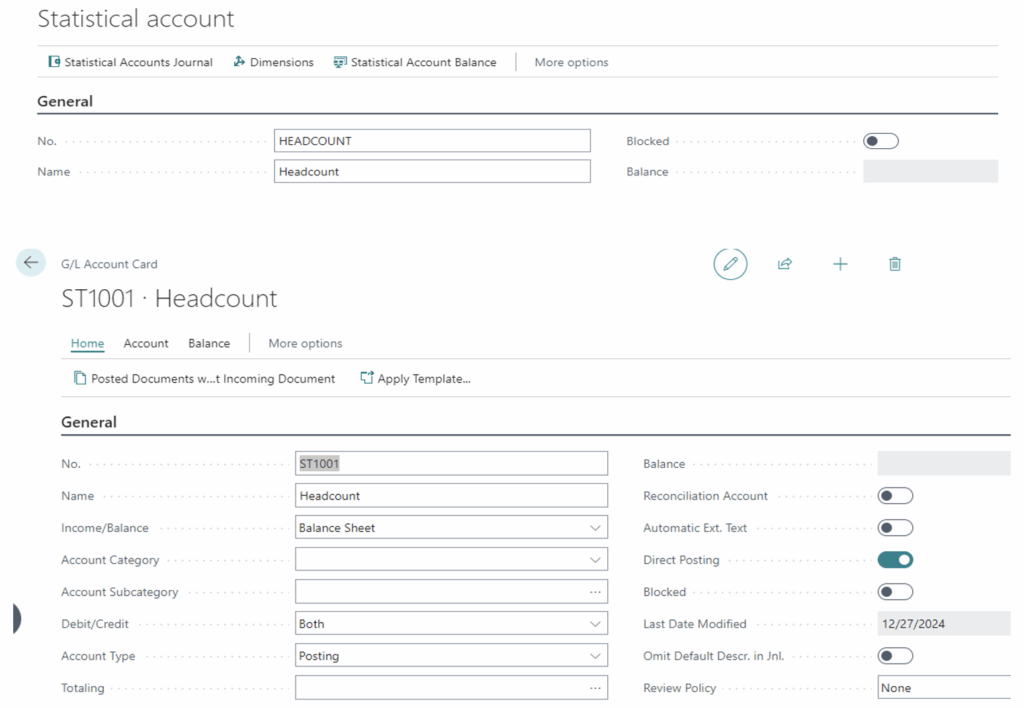
In financial reporting, dollars don’t always tell the full story. Sometimes, non-financial data — like headcount, square footage, or units sold — can provide critical context for performance metrics. Microsoft Dynamics 365 Business Central offers two effective ways to incorporate this kind of data into your financial reports.
Both options allow you to track non-financial data in Business Central alongside your financial data. These accounts are especially useful for reporting KPIs that rely on operational data rather than monetary values.
How to Set Up and Use Statistical Accounts

Option 1: BC Statistical Accounts (Standard Functionality)
- Create Statistical Account
- Use the search bar in BC to find “Statistical Account.”
- Create a new account by assigning a No. and Name.
- Example: No. = HEADCOUNT, Name = Headcount
- Enter Data via Journal
- Search for “Statistical Account Journal.”
- Enter your non-financial data similar to a GL journal entry.
- Use appropriate posting dates and dimensions.
- These are one-sided entries—positive or negative—with no offset account.
- Register the Entry
- Once your data is entered, click Register to post it.
Option 2: Non-Financial GL Accounts
- Create a New GL Account
- Navigate to Finance > Chart of Accounts > New.
- Use a prefix like ST1000 to identify it as statistical.
- Add a descriptive name for clarity.
- Set Account Type
- Choose Income Statement or Balance Sheet depending on the nature of the data.
- For ongoing metrics like headcount, use Balance Sheet to avoid year-end zeroing.
- Post Journal Entries
- Use standard GL journal entries, including dimensions.
- Set up a balancing account (e.g., ST9999) to ensure entries balance.
- Ensure Direct Posting is enabled to allow manual entries.
Tips for Success
- The best practice is to follow a process weekly or monthly where you prepare the non-financial data in Business Central and create an entry using one of the options above.
- Maintain supporting documentation for all entries to ensure transparency and audit readiness.
- Use Balance Sheet accounts for metrics that carry over year to year (e.g., headcount).
- To learn how to display this data in reports, refer to our blog on Financial Reporting – Row Definitions.
Related Content: A practical guide to budgets in Business Central



